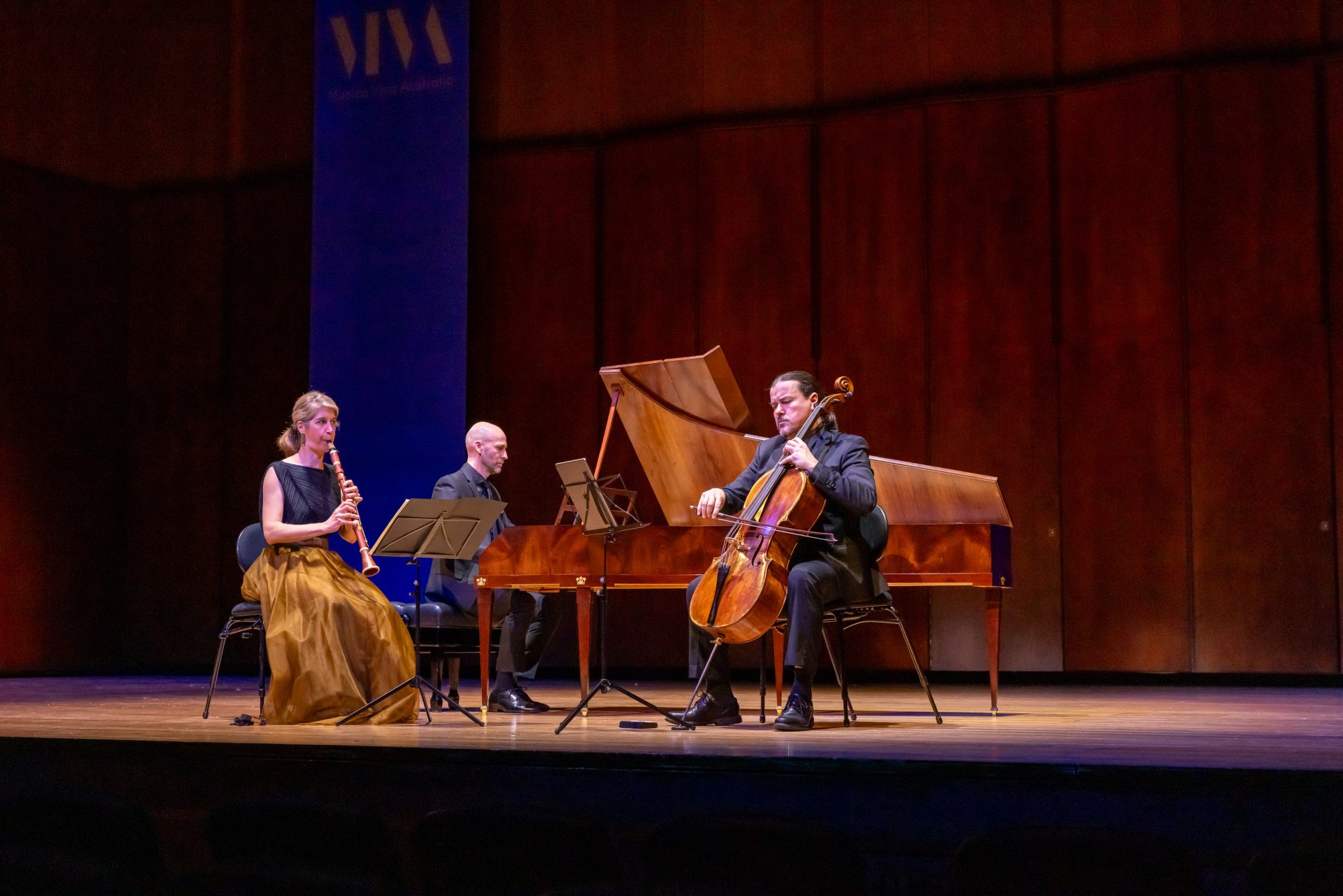A veritable potpourri of Australian talent.
Erin Helyard on fortepiano, Nicola Boud on clarinet and Simon Cobcroft on cello have come together in an Australian tour showcasing the clarinet in the Classical soundworld. The vast Adelaide Town Hall became an intimate salon with this trio’s performance of works by Mozart and Beethoven. Despite the title to this concert’s program, equal airtime was given to each composer.
Beethoven’s Opus 17, sonata for fortepiano and horn, was originally written for horn. Mercifully for modern audiences, Joesph Fridlowsky, a contemporary of Beethoven’s, arranged the sonata for basset clarinet. Not many are familiar with that instrument. But it was immensely popular in its day. It has a wider range and features a distinctive curved shape, much like the oboe da caccia of Bach’s day. That, coupled with a U-bend, gives a wonderfully sonorous voice – from the operatic to the domestic.
The entire conceit is centred on a very simple motif that yearns upwards. Helyard’s distinctive control and punchy playing style is immediate form the outset – his turns are impeccably crisp. Although we are told this is idiomatic of Beethoven’s earlier, more genteel Classical, style, we can already get a glimpse of the brooding character of his music. The music is saturnine. At once we have a thundering descending bass on fortepiano, which Helyard capitalised on to show off the distinctive silvery buzz of the bass on this gorgeous 1790 copy made by local Adelaidean, Richard Schaumloffel. He also made use of the pedals to make chords wash over the audience. Then Helyard and Bould race to a finish.
The bass is particularly busy in the successive movements. Helyard lets a bass note ring out for several bars – to great dramatic effect – as Bould continues her exposition, and then we have a glissando from Helyard. This is playful music.
With Beethoven’s “12 variations on ‘Ein Madchen over Weibchen’” we are treated to another playful dialogue, this time between Helyard and Simson Cobcroft on cello. This folkish aria from Mozart’s Magic Flute has recently been arranged to delightful effect for clavichord and baritone in a recent recording. Here, the theme could be made out clearly. Cobcroft gave gushing vibrato from the outset – this is music to be sung. Helyard despatched glassy trills in the upper register of the keyboard.
Mozart’s Trio in E-flat major, K 498 ‘Kegelstatt’ brought all performers together. That is just as well. Each component in this trio imitates the other so closely it is almost canonic. Cobcroft shone in the second and third movements – traversing the extremities of the fingerboard rapidly but with ease.
Mozart’s Piano Sonata in C major, K 545 is dubbed ‘sonata semplice’. From the outset, it is almost juvenile in its simplicity. That is until you reach the fourth bar. The work is something of a study in scales. Its opening motif is so catchy and well-known that the audience let out a collective ‘ah’ when it was played. Helyard embellished the repeats of the first movement with tasteful improvisations and ornamentation. The third movement was played quite fast.
Again, all three came together in the end, this time with Beethoven’s Piano Trio in B-flat major, Op 11. Melismas, running passages and arpeggiated chords are tossed between the three – Boud despatched them effortlessly, and all while maintaining the mellifluousness of the clarinet. The second movement was something of an aria for the cello, and then for the clarinet. The closing movement featured a long declamation of the theme on fortepiano and facilitated a jarring key change by an extended cadenza.
